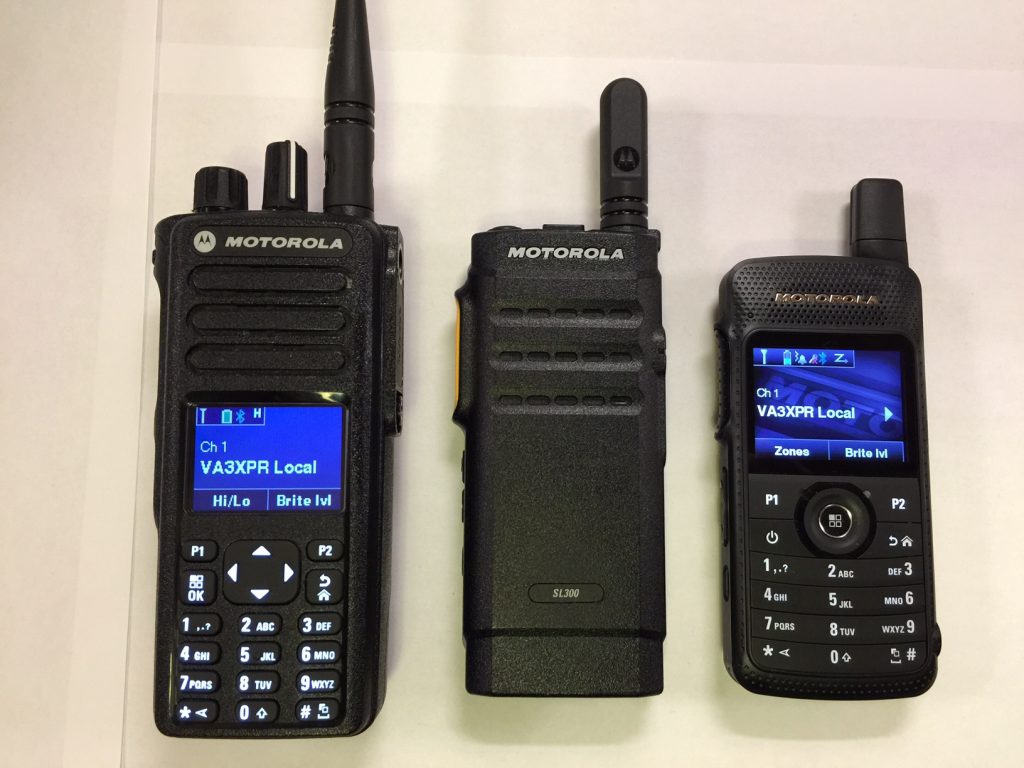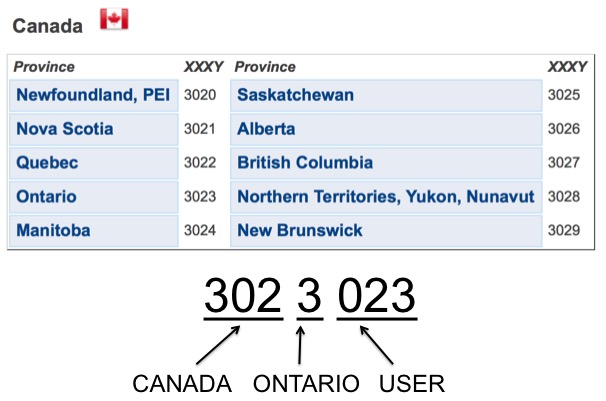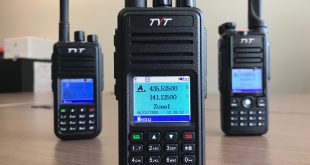
It started out as any other Monday morning would for a retired broadcast industry professional – up by 7:30am, catch-up on the latest ham radio news on-line over coffee and then off to the shack to see how the 20 metre band was shaping up for the day. But today was definitely going to be different one for Peter Dale, VE3EYI – a longtime ham since 1961, who also holds a call signs from Australia and New Zealand where he lived abroad for many years. Today was the day that Peter was going to make his first foray into the world of digital voice communications using DMR. With a new TYT MD-380 waiting patiently to be used, Peter knew that before he could get on the air with his new toy, he would first need to register a DMR ID for his radio.
DON’T MISS: Chivalry for the modern ham: The Radio Amateur’s Code
With the advent of ham DMR in 2009, this digital mode has grown with leaps and bounds within the ham community to the point that there are now well over 20,000 DMR IDs in use globally. For each DMR radio operating on any of the popular DMR networks, including DMR-MARC and DCI, each radio requires a numerical ID. These ID numbers are required for repeaters, portables and mobiles and each radio requires one. Just like unique IP addresses are required for each device connected to the Internet, DMR IDs are required for radios on DMR repeater networks.
Currently, the management of DMR IDs is provided by a small team within DMR-MARC, a ham organization that operates the largest DMR repeater network with over 700 repeaters worldwide. To manage these IDs in a logical fashion, DMR IDs follow the same numbering system as GSM mobile country codes, which are used by wireless phone operators around the world. Typically, DMR IDs are 7-digits long, with the first three digits designating the country, the fourth digit designates the province, state or region and the last three digits designate the user in that particular area. While the vast majority of DMR IDs issued are 7-digits in length, special 5-digit IDs are issued to those users with commercial radios intended for use with Motorola’s Capacity Plus systems where only 5-digit IDs are supported. For DMR repeaters, 6-digit IDs are issued. Some examples are outlined below for DMR IDs issued for use in the Canadian province of Ontario:
- 7-digit DMR IDs for portables and mobiles (i.e.. 3023023)
- 5-digit DMR IDs for portables mobiles using Motorola Capacity Plus systems (i.e. 30231)
- 6-digit DMR IDs for repeaters (i.e. 302303)
For anyone looking to get started with DMR, the first step should be to request a free DMR ID for their radio. This can be done by completing the request form on the DMR-MARC website. These IDs are typically issued to the applicant with 48 hours and are sent to the email address that they provided upon registration. In many cases, users will have more than one radio, however they do not need a unique DMR ID in each radio as long as those radios are not transmitting simultaneously on the DMR repeater network. To see a list of all registered DMR IDs, one can simply check out the DMR ID database, where all users and repeaters are stored.

So why is it important that each DMR radio have its own unique ID number anyway? This is an obvious question, since on FM, radios don’t require any special ID at all. There are two primary reasons for this:
- Contact Lists – most DMR radios have the ability to store contacts, which essentially convert DMR IDs to names and call signs during QSO. As an example when Peter, VE3EYI transmits with his radio, other DMR users who have added the latest DMR users to the contact lists within their radios, would see “VE3EYI Peter”. This occurs when the receiving users radio converts Peter’s DMR ID number of 3023387 to the contact information stored in the contact list, which would be “VE3EYI Peter”. In addition, the network c-Bridges use similar contact lists to display name and call sign information on the Last Heard lists;
- DMR Functions – many DMR functions require the ability to send data between specific DMR radios, including text messaging, Automatic Registration Service, commonly known as ARS, plus many other commercial applications that are not utilized by ham users such as over-the-air firmware or codeplug updates.
It is for these reasons that unique DMR IDs are issued to users in a structured way to prevent chaos on the global DMR repeater networks. Unfortunately, one limitation of DMR is that it is up to the user to register for and program their DMR ID into their radio. With the number of hams adopting DMR doubling every year, this can pose a problem with users either not knowing that they need to register a DMR ID for their radio or simply not programming them into their radio properly. In rare cases, hams have been known to use these limitations for nefarious purposes, such as to masquerade as other users on the network or to keep their repeater jamming efforts anonymous.
So what can we do to keep order on the network during these times of rapid growth? First and foremost, the key to helping newcomers get started with DMR is through education. In the spirit of ham radio, existing users are encouraged to help by educating and assisting new uses to DMR whenever possible. This includes helping them set-up up their radios properly, teaching them best operating practices for DMR repeater networks and also, encouraging them to “pay it forward” by mentoring others in return.
Some common examples where incorrect DMR IDs can inadvertently be used is when DMR newcomers download and use prepared code plugs without changing the default DMR ID contained in it, or when a ham sells a DMR radio to another ham and didn’t first remove their existing ID from it. Accordingly, if you see a user on the air with the DMR ID of something like “1”, “201”, “1234567”, “5555”, etc., which are not registered IDs, it is highly recommended that you offer assistance to that person to help them get a proper DMR ID registered and programmed into their radio. This is very much in keeping with the spirit of ham radio and helps the user overcome some of challenges of getting started with this new mode.
In the case of nefarious users who choose not to follow DMR repeater Codes of Conduct, there are still tools that repeater owners can employ to deal with such situations. First, repeater owners can implement a feature available for Motorola MOTOTRBO repeaters called Restricted Access to System, commonly known as RAS. Essentially, RAS allows varying levels of controlled access to the repeater, depending upon the issue that the repeater owner wants to control. On a basic level, repeater owners can implement access controls such that only certain DMR IDs can access the repeater and its associated DMR repeater network. The downside to this is that the actual IDs to be accepted by the repeater need to be manually programmed into it. This can be time consuming for the repeater owner and does not prevent DMR ID masquarading.
To implement maximum control, repeater owners can implement a RAS key or password that would be required for any radios that want to be able to access the repeater. While this is the most effective method for limiting access to the repeater, it would limit the type of radios that could access the repeater, as only Motorola MOTOTRBO units currently support this functionality. It would be unfortunate if such measures need to be implemented, however at least there are options available for repeater owners in places where problem users are intent on disrupting communications.
Fortunately, the latter case of DMR ID misuse is in the definite minority, as most hams operate with the spirit intended for the hobby. By helping one another overcome the challenges associated with adopting this new digital mode, we can continue to make DMR an exciting and rewarding aspect of the hobby for all to enjoy.
 VA3XPR Toronto's Digital Ham Radio Repeater Connection
VA3XPR Toronto's Digital Ham Radio Repeater Connection





